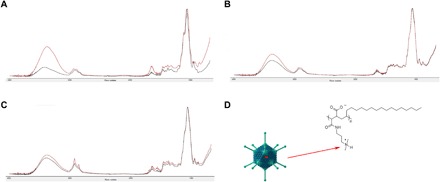Fig. 7. FTIR spectroscopy scans suggest that nitrogen-hydrogen bonds between virus and surfactant may be key for stabilization in thin film matrix.

Infrared absorption spectra in the 4000 to 800 cm−1 region for films containing (A) base alone (formulation 25), (B) base and sorbitol (formulation 27), and (C) optimized formulation 28. In each panel, black traces represent film in the absence of adenovirus. Red traces represent film containing 1.25 × 1012 particles of adenovirus. The most prominent change in spectra in the nitrogen-hydrogen region (wave number 3300) can be seen in scans where surfactant was present (C). (D) The proposed interaction between the cationic region of the surfactant and the negatively charged glutamic acid residues of the adenovirus hexon proteins. Virus image adapted from: Splettstoesser, T. A simplified 3D-generated structure of the adenovirus. Wikimedia Commons accessed 5 March 2019; available at: https://commons.wikimedia.org/wiki/File:Adenovirus_3D_schematic.png.
